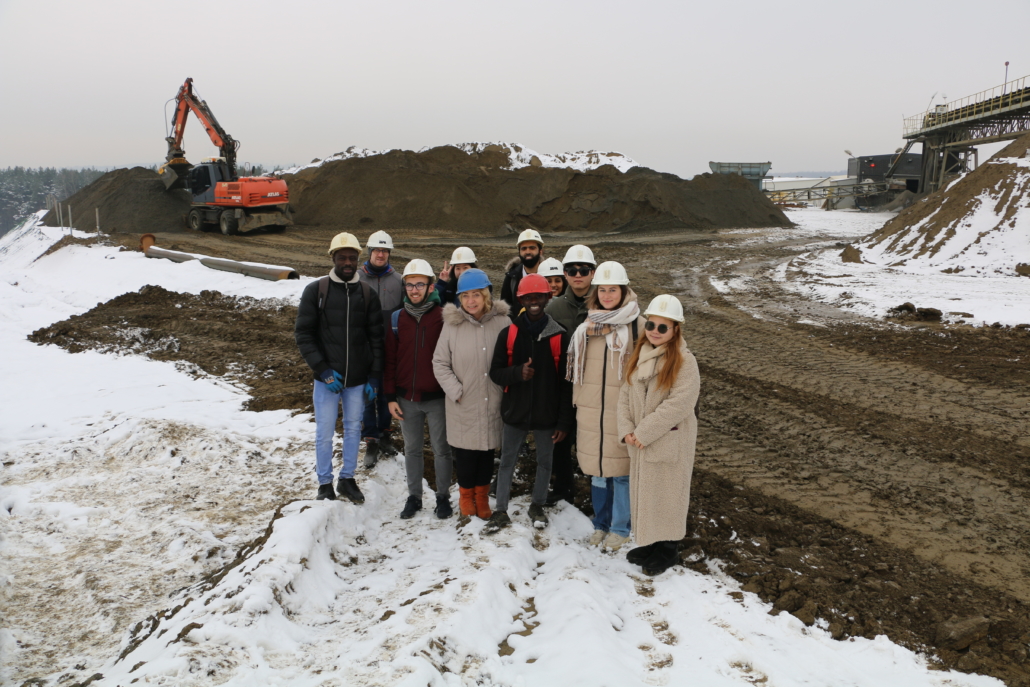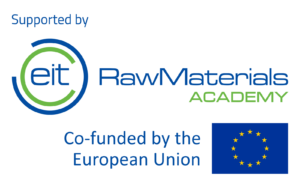Field trip: New trends in the mining technologies and mineral processing
/in Uncategorised/by Márcio Tameirão PintoOn the Friday trip, we visited three different places: the tailings processing plant of ZGH Bolesław, including the tailings landfill, and the geological museum of ZGH Bolesław – Mine Knowledge and Mining Museum (located underground in the Market Square in Olkusz). We began the day with a visit to the tailings processing plant in ZGH Bolesław. This plant commenced operations in 2017. During our tour, we observed the tailing process in the industrial hall, explored the ‘command center’ of the plant equipped with online monitoring of parameters in specific tanks, the tailing pond, and the conveyor belt transporting waste to the plant.
The flotation process, which we observed at the plant, involves extracting zinc and lead from material classified as waste during zinc and lead mining operations at the mine. Throughout the process, waste from the heap is introduced into flotation machines. These machines can handle waste with a grain diameter of up to 0.02 mm. Larger-than-set waste grains are pre-fed to the mill, reducing their size and further separating sulfur compounds from the material.
The flotation process utilizes closed-loop water, and various reagents are added to the flotation mixtures to maintain the right conditions. For example, copper sulfate (CuSO4), recognizable by its characteristic blue color, is among the reagents. Buckets containing this substance were visible near the flotation machines. The concentrate obtained in the flotation process is transferred to a filter. From there, the material is transported to the smelter to undergo metallurgical processes.

After touring the ZGH Boleslaw plant, we proceeded to the ZGH Boleslaw ‘Knowledge Mine’ Geological Museum. There, we delved into the history of zinc and lead mining and metallurgy in the Boleslaw and Olkusz areas. The zinc and lead mine ‘Pomorzany,’ once the supplier for the smelter, ceased operations in 2020 due to the depletion of deposits. Despite this, the smelter and metallurgical activities in the region persist. The Boleslaw smelter now sources zinc from a foreign mine in Montenegro, acquires zinc ore from the market, and receives concentrate from the flotation processes of waste from the now-closed Boleslaw mine. Mining in the area boasts a history of approximately 700 years, with zinc and lead ore deposits located about 100-200 meters below ground level. The distribution of these deposits was quite chaotic, resulting in complex and densely spaced underground tunnels in the mine.
At the museum, we had the opportunity to explore geological specimens of various minerals, including zinc ore, along with diagrams and films illustrating the mining and metallurgical processing of zinc ores. Additionally, we gained insights into the lives of miners outside of work, exploring aspects such as the orchestra, Barbour, and the domestic life of mining families in the area.
In front of the museum building, we observed the contemporary mining machinery used in today’s mines and various underground railroads within the transportation tunnels.
Lastly, we visited the Olkusz Museum situated in the market square and its underground section. Here, we were informed about the city’s history, which has been a mining and metallurgical powerhouse since medieval times. We also learned about the historical methods of mining and processing zinc and lead ores in the regions of present-day Olkusz and Boleslaw.

